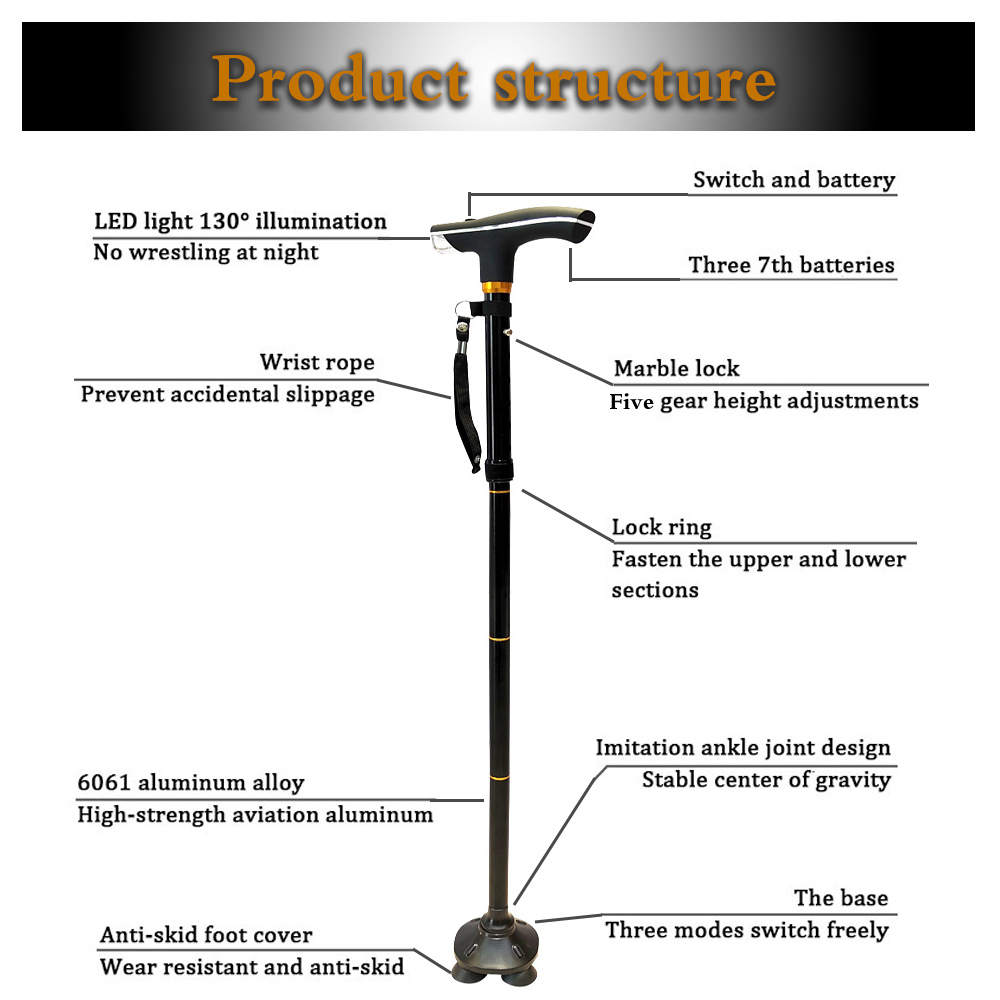What are some popular materials used to make walking canes for hiking?
Walking canes for hiking can be made from a variety of materials, each with its own unique properties and benefits. Some of the most popular materials used to make hiking canes include
Aluminum
Aluminum is a lightweight and durable material that is commonly used to make hiking canes. Aluminum hiking canes are easy to carry and provide excellent support and stability on rough terrain. They are also relatively inexpensive compared to other materials.
Carbon fiber
Carbon fiber is a strong and lightweight material that is becoming increasingly popular for hiking canes. Carbon fiber hiking canes are extremely strong and durable, yet lightweight and easy to carry. They are also resistant to corrosion and can withstand extreme temperatures and weather conditions.
Wood
Wood is a traditional material used to make walking canes, including hiking canes. Wood hiking canes are durable and provide a classic, elegant look. They are often made from hardwoods such as oak or maple, and can be carved or stained to create unique designs.

Bamboo
Bamboo is a lightweight and eco-friendly material that is increasingly popular for hiking canes. Bamboo hiking canes are strong, durable, and sustainable, making them an excellent choice for environmentally-conscious hikers.
Fiberglass
Fiberglass is a strong and lightweight material that is commonly used to make hiking canes. Fiberglass hiking canes are resistant to corrosion and have excellent shock-absorbing properties, making them a good choice for hikers with joint pain or other physical issues.
Titanium
Titanium is a strong and lightweight metal that is increasingly used in hiking canes. Titanium hiking canes are extremely durable and can withstand extreme temperatures and weather conditions. They are also resistant to corrosion and have excellent shock-absorbing properties.
When choosing a material for a hiking cane, it’s important to consider factors such as weight, durability, and price. Aluminum and carbon fiber are both lightweight and durable materials that provide excellent support on rough terrain, while wood and bamboo provide a more classic, elegant look. Fiberglass and titanium offer excellent shock absorption properties, making them a good choice for hikers with joint pain or other physical issues.
Ultimately, the material you choose for your hiking cane will depend on your personal preferences and needs. By selecting a hiking cane made from high-quality materials, you can enjoy the great outdoors with greater comfort, confidence, and safety.
Maintenance of hiking sticks
Carbon fiber canes cannot be subjected to too much lateral force, nor can they be bumped, so be careful when using them. After the trekking poles are used up, if they will not be used for a long time, they should be stored upright with the opening facing downward.
Medical cane
This type of cane has its own name – “walking aid”, which can be divided into the following three types according to the number of contact points with the ground: general cane: there is only one contact point with the ground, and the advantage lies in dexterity. However, because it provides less support and balance, it is only suitable for use when moving slowly.
Tripod Cane
There are 3 points of contact with the ground. Due to the large base area, it can provide better support and stability than ordinary canes. These canes are especially useful on uneven surfaces.
Four-legged cane
There are 4 points of contact with the ground. Suitable for stroke patients with hemiplegia at the beginning of rehabilitation, it can increase the stability of walking. However, since the four points can form multiple planes, it is easy to cause shaking and instability when the road surface is uneven. Therefore, it is recommended that the four-legged walking stick should be used indoors.